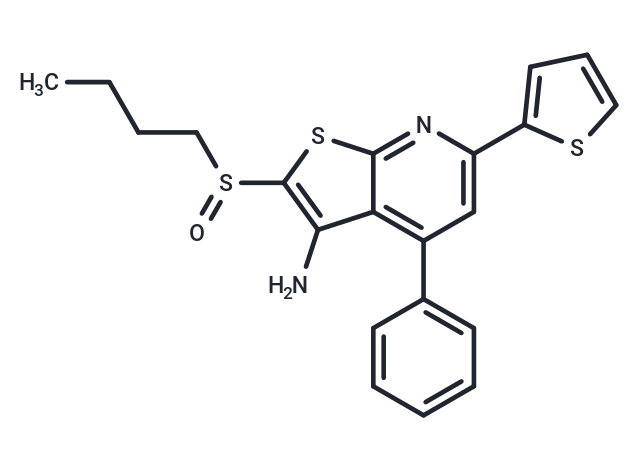Shopping Cart
- Remove All
 Your shopping cart is currently empty
Your shopping cart is currently empty

SW033291 is a small-molecule inhibitor of 15-PGDH (Ki=0.1 nM) that increases prostaglandin PGE2 levels in bone marrow and other tissues.

| Pack Size | Price | Availability | Quantity |
|---|---|---|---|
| 1 mg | 32 € | In Stock | |
| 2 mg | 45 € | In Stock | |
| 5 mg | 75 € | In Stock | |
| 10 mg | 115 € | In Stock | |
| 25 mg | 210 € | In Stock | |
| 50 mg | 353 € | In Stock | |
| 100 mg | 511 € | In Stock | |
| 1 mL x 10 mM (in DMSO) | 75 € | In Stock |
| Description | SW033291 is a small-molecule inhibitor of 15-PGDH (Ki=0.1 nM) that increases prostaglandin PGE2 levels in bone marrow and other tissues. |
| Targets&IC50 | 15-PGDH:1.5 nM, 15-PGDH:0.1 nM(Ki) |
| In vitro | In Vaco-503 cells, SW033291 (2.5 μM) decreases cellular 15-PGDH enzyme activity by 85%.[1] |
| In vivo | In mice receiving a bone marrow transplant, SW033291 (10 mg/kg, i.p.) promotes hematopoietic recovery. In mouse models of colon and liver injury, SW033291 (10 mg/kg, i.p.) reduces the levels of colitis-associated inflammatory cytokines, protects mice from colitis, and promotes liver regeneration. [1] |
| Kinase Assay | Fluorescence anisotropy (FP) ligand displacement assay: All components are dissolved in buffer of composition 50 mM HEPES pH 7.4, 150 mM NaCl and 0.5 mM CHAPS with final concentrations of BRD 2/3/4 75 nM, fluorescent ligand 5 nM. 10 μL of this reaction mixture is added using a micro multidrop to wells containing 100 nL of various concentrations of I-BET151 or DMSO vehicle (1% final) in Greiner 384 well Black low volume microtitre plate and equilibrated in the dark for 60 minutes at room temperature. Fluorescence anisotropy is read in Envision (lex = 485 nm, lEM = 530 nm; Dichroic = 505 nM). |
| Molecular Weight | 412.59 |
| Formula | C21H20N2OS3 |
| Cas No. | 459147-39-8 |
| Smiles | CCCCS(=O)c1sc2nc(cc(-c3ccccc3)c2c1N)-c1cccs1 |
| Relative Density. | no data available |
| Storage | store at low temperature | Powder: -20°C for 3 years | In solvent: -80°C for 1 year | Shipping with blue ice. | ||||||||||||||||||||||||||||||||||||||||
| Solubility Information | DMSO: 41.3 mg/mL (100.1 mM), Sonication is recommended. Ethanol: 8.3 mg/mL (20.12 mM), Sonication is recommended. | ||||||||||||||||||||||||||||||||||||||||
Solution Preparation Table | |||||||||||||||||||||||||||||||||||||||||
Ethanol/DMSO
DMSO
| |||||||||||||||||||||||||||||||||||||||||

Copyright © 2015-2025 TargetMol Chemicals Inc. All Rights Reserved.